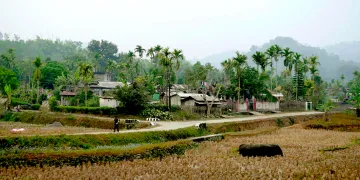Design Research
The design thinking that the SELCO foundation practiced for livelihood promotion interventions required prototyping and frequent iterations. But the Foundation started with extensive research before undertaking a project, centered on two questions:
- How can an intervention improve a household’s income?
- What do households need to sustain an intervention for the long-term?
An attempt to answer the first question was satisfied by creating a ‘problem statement’ that served to guide the technical development of devices and DRE power sources. Investigating the second question led to an ‘ecosystem map’ that identified the functional requirements of maintaining the enterprise over time and began to identify partners that might fulfill these requirements.
Problem Statement
The problem statement aimed to look at a proposed intervention from the perspective of the intended user. Creating problem statements required a journey of discovery for SF staff. Working with poor households, field workers would examine every aspect of daily life, looking for ways that labor could be made more efficient. Besides understanding how a household budgeted its time, the staff would consider the aspirations of its end-users and the potential any device had for enhancing income.
As designs were considered and altered, staff would return to the problem statement to assess if the intervention continued to address the needs of the user. A well-considered problem statement provided discipline and pushed Foundation staff to consider alternatives to the usual way of doing things – especially as it made DRE more practical. Hande notes,
Considering demand is important as it pushes efficiency. For instance, if electricity is needed for a sewing machine, how efficient is the machine? What will it sew? How many hours will it be used? You do not raise fundamental questions about the technology if you focus only on the amount of electricity that existing machines need.
The problem statement could include:
- A short statement of a present condition (e.g. farmers currently have to use a dheki, or thresher, and lots of manual energy to dehull rice).
- The consequences of this situation (e.g. farmers spend hours dehulling rice and expend considerable tedious labor).
- Possible solution(s) (e.g. a DRE powered electric dehuller).
- Income opportunity (e.g. charging local rice farmers to dehull their harvests).
At SF, the problem statements pushed the decentralized nature of solar energy to its logical end. SF wanted ownership of devices to be as close as possible to the users of the technology – an approach that differed from many other designers of DRE interventions.[1 SF believed that ownership of the devices by the users was important to making the interventions work. As owners, the users would become invested in the solution, unwilling to walk away if problems arose. On the other hand, the degree of willingness of a household to invest in a particular device was evidence of the correctness of the Foundation’s understanding of their problem.

Constructing a problem statement and building an ecosystem map required field work in remote villages.
Ecosystem Mapping
A problem statement could only map out the technical requirements of a DRE solution. Even with the proper technical design, users needed assistance for training, financing, maintenance, and outlets for selling increased production. For SF, this meant that a successful intervention needed to be rooted in a supporting system of organizations that provided needed functional inputs. Creating a map of the ecosystem, therefore, was a crucial part of any intervention.
There were two aspects of an ecosystem map. The first was consideration of the functional inputs and outputs for a given intervention. What requirements would a given intervention entail? What inputs would a microenterprise require? Where might an enterprise sell its increased output?
The second part of an ecosystem map was determining how these functional requirements could be met given the current array of services in a user’s region. SF then worked to partner with the organizations in a given region to arrange for these services. The partners could range in their readiness to support an intervention. Some enthusiastically became partners when they were informed of an intervention. More often than not, existing organizations were not properly set up to provide support for new technologies or were dubious of new approaches. Therefore, SF’s ecosystem mapping presented a “gap analysis,” in which SF designers specified how existing organizations might need to adapt in order to play a crucial supporting role in the forming ecosystem. Gap analysis also helped identify places where no existing organizations could fulfill the functions necessary. To fill these gaps, SF would sometimes incubate organizations or help existing organizations build new capacities. Other gaps could be filled through government programs.
Building partner relationships required patience. Besides assessing inclination and willingness, SF had to develop the organizational capacity of a partner to meet the needs of users, an important consideration when the organizational partners were new or small. But the effort was crucial for the long-term success of an intervention. Partner organizations brought alternative perspectives on an intervention that could improve a design. These organizations also brought insights into solving problems during the pilot and testing phases of an intervention. Most importantly, the partner organizations would be critical to preserving an intervention once it scaled. These partner organizations animate an ecosystem that might even produce further innovations.
Footnotes
- 1
The solar micro-grids that other groups had installed across India and Africa were often driven by an effort to recreate the structure of a utility; most grids were owned by companies or government agencies who then charged for the power.